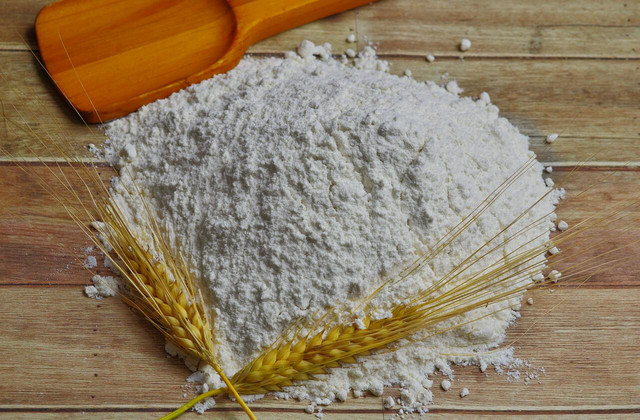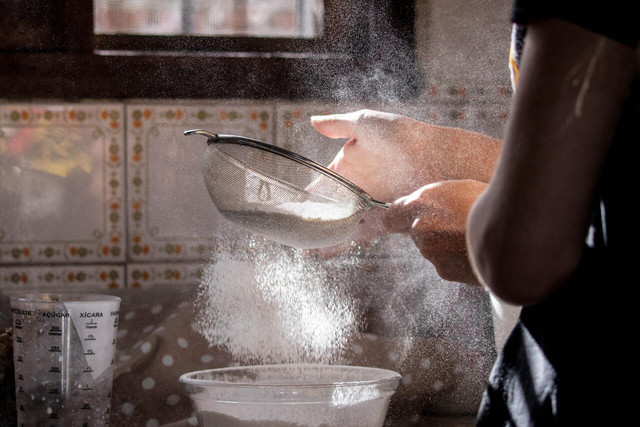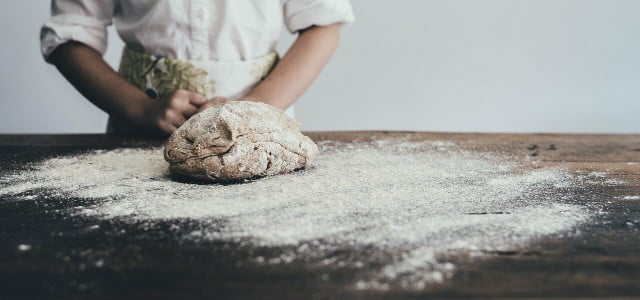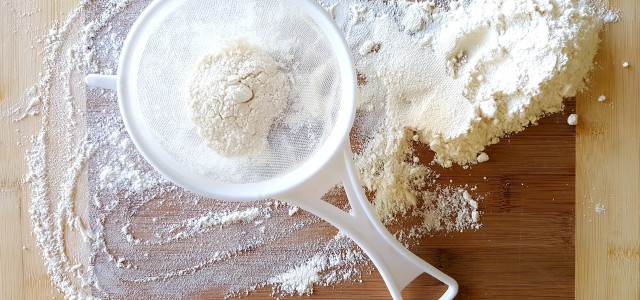You can substitute bread flour 1:1 with flour that you probably already have in your pantry – or just make homemade bread flour yourself. We’ll show you how.
Just because each recipe you bake calls for a different flour, it doesn’t mean you have to follow it – in fact, there is such a subtle difference between many flours that many can’t even tell the difference. By using what you have and switching up recipes, you can save space in your pantry and the hassle of trying to use up all the various bags before they go bad or attract bugs.
When substituting for bread flour, don’t be tempted to use self-raising flour because it doesn’t give the yeast time to act in the dough.
How to Substitute Bread Flour 1:1



Finding a substitute for bread flour doesn’t mean you have to have elaborate flour choices in your pantry. In fact, your standard all-purpose flour lying in your cupboard works as an awesome substitute. Simply use the same amount of all-purpose flour as you would bread flour and hey presto. It is important to note that bread flour is a bit heavier, so keep this in mind when measuring, e.g. one cup of bread flour weighs approximately 145 grams /5 ounces, whereas one cup of all-purpose flour weighs around 125 grams/4 1/2 ounces.
- On average bread flour contains a higher protein percentage, giving a slightly higher rise than that of all-purpose flour. It also makes for a denser and chewier bread as it produces more gluten.
- All-purpose flour is more readily available and cheaper, so why not experiment with recipes and see how it turns out with all-purpose flour?
On the other hand, it is possible to replace all-purpose flour with bread flour in recipes: just be careful not to overwork the dough as the higher protein content increases the amount of gluten and makes for a tougher finished product.
Autolyze: Improving your All-Purpose Flour Bake
You can better prepare your all-purpose flour for baking by mixing it with the amount of water stated in the recipe you’re following and leaving it to rest for 20-25 minutes. This technique is called autolyze and can help bring out the best of the qualities of the gluten in your bread, improving overall extensibility and flavor. Proceed with the recipe as per normal once the resting period ends.
If you don’t think the natural gluten content in your dough is going to be enough, you can always add more by switching out two teaspoons of each cup of all-purpose flour with two teaspoons of gluten. You may find gluten in health food stores or online, for example on Amazon**.
Homemade Bread Flour Substitute



For a more accurate bread flour substitute, you can add vital wheat gluten (often used in seitan) to all-purpose flour.
You will need:
- 1 cup all-purpose flour (4 1/2 oz or 129 g)
- 1 1/2 teaspoons vital wheat gluten (1/8 oz or 4 g) – you might find this in your local natural or organic food store
Method
- Measure out one cup of all-purpose flour and place it in a medium bowl.
- Remove 1 1/2 teaspoons of flour and replace with 1 1/2 teaspoons vital wheat gluten (1/8 ounce or 5 grams).
- Give it a good whisk to combine.
Read more:
- Is Bread Vegan? Brands, Recipes and Tips – Utopia
- Konjac Flour: Uses and Regional Alternatives
- Yeast-Free Bread: How to Bake Fresh Bread With Baking Soda
Do you like this post?







